National Sudden Cardiac Arrest Awareness Month
Sudden cardiac arrest is often compared to a heart attack, but in reality, the two are very different.
When you think about Cardiac Arrest what do you think about? Heart pain, heart attack? Do you think about discomfort in the chest and other areas of your upper body? What about Cold sweats or shortness of breath? For me, I think of heart attacks which can present with all the symptoms above.
So, what is Sudden Cardiac Arrest? Are they not the same? The word “Sudden” in Sudden Cardiac Arrest, can make us think it is fatal and without warning. Let’s investigate what the signs and symptoms are for a cardiac arrest and who is at most at risk?
Facts about Cardiac Arrest
Roughly 475,000 American die in a year from Cardiac Arrest. Globally, Sudden Cardiac Arrest claims more lives than many other diseases combined including breast cancer, prostate cancer, pneumonia, auto accidents, HIV, firearms, house fires to name a few.
Each year roughly 350,000 cases occur outside of a hospital and the survival rate is less then 12%. These are the sobering statistics.
CPR can double or triple the chances of survival if administered within the first few minutes of cardiac arrest.
You can be the hero to someone by learning CPR. You can help save that life. Contact Lifesemerg.com to learn CPR and how to use an AED.
A heart attack, or myocardial infarction, is a medical emergency in which the supply of blood to the heart is suddenly and severely reduced or cut off, causing the muscle to die from lack of oxygen. More than 1.1 million people experience a heart attack (myocardial infarction) each year, and for many of them, the heart attack is their first symptom of coronary artery disease. (cedars-sinai.org)
Who is at risk?
Those at the highest risk have these 10 traits, symptoms, or lifestyle.
1. Smoking
2. Hypertension
3. High blood cholesterol
4. Heavy alcohol consumption
5. No physical activity
6. Family history of coronary artery disease
7. Not getting enough nutrition
8. Diabetes
9. Illegal drugs
10. Having a heart condition
What Age is most at risk? (As one grows old the chances of cardiac arrest increase)
Although heart attacks usually strike men over 45 years and women over 55, in recent years it has happened in people in there 20’s, 30’s, and 40’s. SCA can happen at any age, any gender, race and even to those in seemingly good health. The most common age was found to be between 35 and 45 years with 53% while those aged 25 – 35 years old have a 16% Diagnosis.
10 signs of Heart-Attack?
- Shortness of Breath,
- Chest Pain
- Heart Palpitations
- Extreme Dizziness
- Lose Consciousness
- Slump or fall over, collapse
- Loss of alertness
- Have difficulty breathing or completely lose your breath
- Feel nauseous or have an urge to vomit
- Feel weak or fatigue
The question is, if you experience signs of a heart attack, is there someone in your household or place of business that has been trained in the vital CPR skills that could save your life, especially in those critical moments after your cardiac event? Equally, are you trained to be a hero in someone else’s life should they have a heart attack?
On a typical morning, we wake, have breakfast, leave for work, rush through lunch, meetings, then home, or maybe the gym. Unaware of the potential danger. SCA can happen at any time, any place. It can happen in suddenly and without warning. You can be an athlete at peak performance or of average health.
Whatever your situation, do not forget to learn more about SCA, and how you can be a hero to someone in need of your help. Learn more at www.lifesemerg.com.
References

